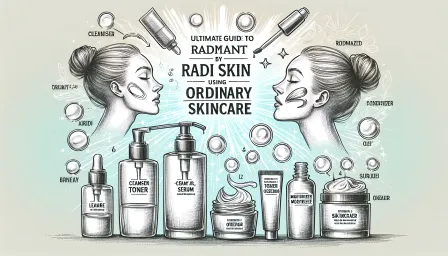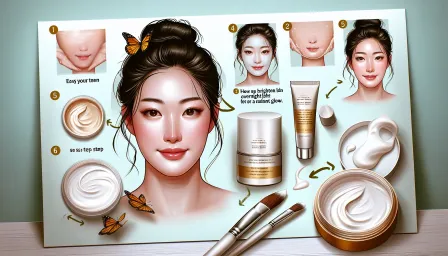Retinol Before or After Serum: The Ultimate Guide to Perfect Skincare

Learn whether to use retinol before or after serum in your skincare routine. Discover the best practices, expert tips, and effective solutions to achieve perfect skin.
Introduction
In the world of skincare, there are numerous products and routines that promise perfect skin. However, confusion often arises when it comes to the application order of these products. A frequent query among skincare enthusiasts is whether to use retinol before or after serum. This ultimate guide aims to clear up this confusion by delivering expert insights and practical solutions to optimize your skincare routine.
Understanding Retinol and Serum
What is Retinol?
Retinol, a derivative of Vitamin A, is a potent ingredient celebrated for its anti-aging properties. It boosts collagen production, accelerates cell turnover, and unclogs pores, making it an effective treatment for wrinkles, fine lines, and acne.
What is a Serum?
Serums are concentrated formulations designed to deliver powerful ingredients directly into the skin. There are various types of serums, each targeting specific concerns such as hydration, brightening, and anti-aging. Their lightweight consistency allows for deeper penetration into the skin.
The Science Behind Application Order
To achieve the utmost efficacy from your skincare products, understanding the science behind their application is essential. The order in which you apply your products can affect their absorption and overall effectiveness. This notion is particularly critical when it comes to retinol and serum.
Thin to Thick
A general rule of thumb in skincare is to apply products from thinnest to thickest consistency. This ensures better absorption and layering. Given this rule, serums, which are typically lightweight, should be applied before retinol.
pH Levels
Skincare products have varying pH levels, and the order of application can influence the skin’s pH balance. Serums with active ingredients like Vitamin C require a lower pH to be effective, whereas retinol works better in a slightly higher pH environment. Applying serum first allows it to penetrate effectively without being hindered by subsequent products.
Step-by-Step Guide to Apply Retinol and Serum
Here is a comprehensive step-by-step guide to optimize the application of retinol and serum in your skincare routine:
Step 1: Cleanse
Start with a gentle cleanser to remove dirt, oil, and makeup. This preps your skin to absorb the following skincare products more effectively.
Step 2: Tone
Use a toner to balance your skin’s pH and prepare it for better absorption of active ingredients in your serum and retinol.
Step 3: Apply Serum
Take a few drops of your chosen serum and gently pat it onto your skin. Wait for a few minutes to allow the serum to fully absorb.
Step 4: Apply Retinol
After your serum has been absorbed, apply your retinol. Start with a pea-sized amount and evenly distribute it across your face. Allow it to absorb completely.
Step 5: Moisturize
Seal in the active ingredients with a moisturizer. This will help keep your skin hydrated and reduce potential irritation from retinol.
Step 6: Sunscreen (Morning Routine)
If you are following this routine in the morning, always end with a broad-spectrum sunscreen to protect your skin from UV damage, especially when using retinol, which can make your skin more sensitive to the sun.
Expert Tips and Best Practices
To maximize the benefits of incorporating retinol and serum into your skincare routine, consider the following expert tips and best practices:
Start Slowly
Retinol can be potent, so it’s advisable to start with a lower concentration and gradually increase usage. Begin by applying it twice a week and gradually move to nightly use as your skin adapts.
Patch Test
Before integrating new products into your routine, perform a patch test to identify any potential allergic reactions. Apply the product to a small area on your forearm and wait 24 hours to observe any adverse effects.
Hydration is Key
Using retinol can sometimes lead to dryness and irritation. Incorporate hydrating serums and moisturizers to maintain the skin’s moisture barrier and reduce discomfort.
Avoid Mixing with Certain Actives
When using retinol, avoid combining it with potent actives like AHAs, BHAs, and Vitamin C in the same routine, as this can lead to irritation. Instead, use these actives on alternating nights.
Common Mistakes to Avoid
While using retinol and serum can significantly improve your skin’s appearance, some mistakes can hinder your progress:
Overusing Retinol
More isn’t always better when it comes to retinol. Overuse can lead to severe dryness, peeling, and irritation. Stick to the recommended frequency and concentration.
Skipping Sunscreen
Retinol increases your skin’s sensitivity to the sun. Skipping sunscreen can lead to UV damage and negate the benefits of retinol. Always apply sunscreen during the day.
Applying to Damp Skin
Applying retinol to damp skin can enhance its potency and lead to increased irritation. Ensure your skin is completely dry before applying retinol.
Ignoring Irritation
If you experience persistent irritation or adverse reactions, it’s important to adjust the frequency or consult with a dermatologist. Ignoring irritation can exacerbate skin issues.
Conclusion
Incorporating retinol and serum into your skincare routine can yield transformative results when done correctly. Remember to apply serum before retinol to optimize absorption and efficacy. By following the steps and tips provided in this guide, you can achieve healthier, more radiant skin. Always listen to your skin and make adjustments as needed to create a personalized routine that works for you.



























